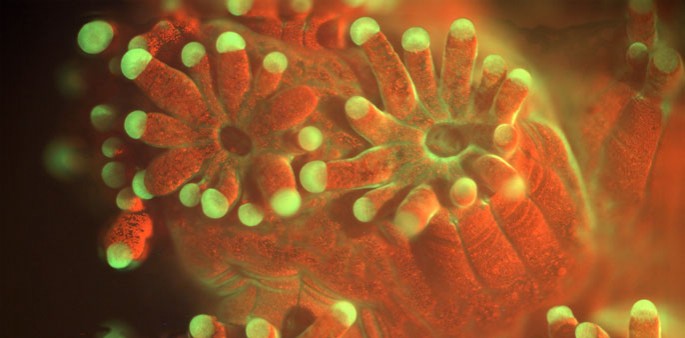A new state of the art, underwater microscope reveals how marine organisms and animals interact with each other and with their natural habitat, revealing amazing shots of corals kissing, fighting and even dancing across the seafloor. Watch the amazing coral video here.
This new breakthrough device is known as the Benthic Underwater Microsope (BUM) is a diver operated microscope ideal for marine environments, which is now offering a glimpse of the ocean's diverse ecosystem along with its inner workings.
The underwater microscope can observe even the tiniest micro organisms, measuring at 10 micrometers, which is also two to five times more powerful than other underwater microscopes.The BUM is developed by researchers from the Scripps Institution of Oceanography's Jaffe Laboratory for Underwater Imaging located at the University of California in San Diego, for scientists to observe coral polyps among the Red Sea feed, along with how other corals compete with each other and how they respond to algal colonies.
In this new study, scientists say that coral polyps which are unlike coral reefs, are soft creatures that possess small mouths and tentacles can apparently "kiss" each other, when they observed the animals under the BUM.
According to co-author of the study, Andrew Mullen from the Scripps Institution of Oceanography at University of California in San Diego, they were initially unsure why these coral polyps were kissing but the team believes that this is a unique way for exchanging nutrients with each other.
Apart from sweet kisses, BUM also reveals that the polyps can fight with each other, where the creatures can also identify who is a friend or an enemy. Researchers placed other coral species near the polyps where they coral polyps would instantly respond by sending out filaments within their guts, as a signal to attack other creatures.
Mullen explains that this might seem like a chemical sensor to identify that their neighbor is from the same species or not.
These reefs in Maui, Hawaii are greatly damaged by coral bleaching which is mainly caused by warming waters due to climate change, which in turn, makes the reef highly vulnerable to algae infestation. BUM also revealed how harmful algae can also infect and invade between the coral polyps.
This new study is published in the journal Nature Communications.



























